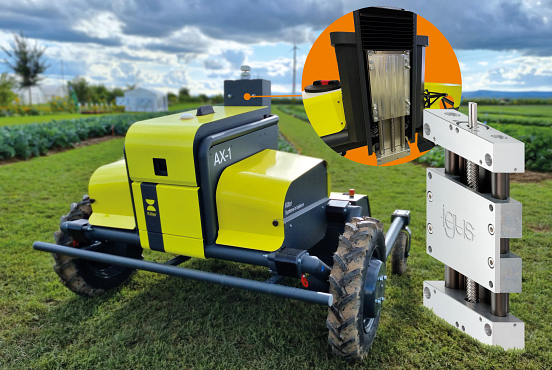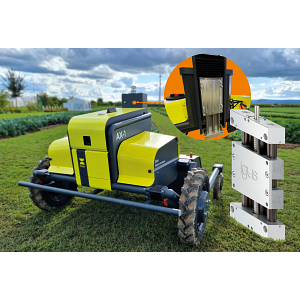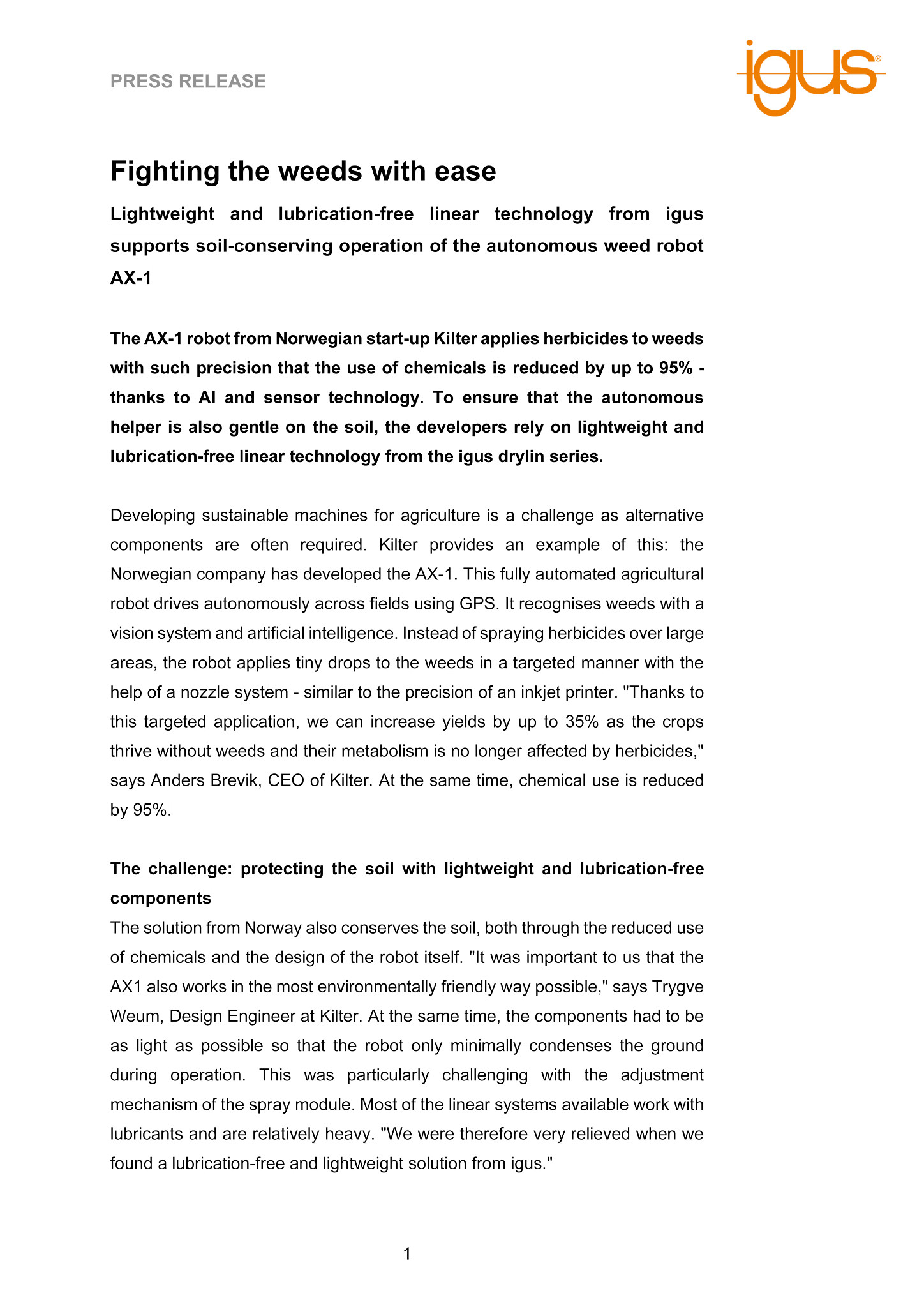Fighting the weeds with ease
August 5, 2025
Lightweight and lubrication-free linear technology from igus supports soil-conserving operation of the autonomous weed robot AX-1

The AX-1 robot from Norwegian start-up Kilter applies herbicides to weeds with such precision that the use of chemicals is reduced by up to 95% – thanks to AI and sensor technology. To ensure that the autonomous helper is also gentle on the soil, the developers rely on lightweight and lubrication-free linear technology from the igus drylin series.
Developing sustainable machines for agriculture is a challenge as alternative components are often required. Kilter provides an example of this: the Norwegian company has developed the AX-1. This fully automated agricultural robot drives autonomously across fields using GPS. It recognises weeds with a vision system and artificial intelligence. Instead of spraying herbicides over large areas, the robot applies tiny drops to the weeds in a targeted manner with the help of a nozzle system – similar to the precision of an inkjet printer. “Thanks to this targeted application, we can increase yields by up to 35% as the crops thrive without weeds and their metabolism is no longer affected by herbicides,” says Anders Brevik, CEO of Kilter. At the same time, chemical use is reduced by 95%.
The challenge: protecting the soil with lightweight and lubrication-free components
The solution from Norway also conserves the soil, both through the reduced use of chemicals and the design of the robot itself. “It was important to us that the AX1 also works in the most environmentally friendly way possible,” says Trygve Weum, Design Engineer at Kilter. At the same time, the components had to be as light as possible so that the robot only minimally condenses the ground during operation. This was particularly challenging with the adjustment mechanism of the spray module. Most of the linear systems available work with lubricants and are relatively heavy. “We were therefore very relieved when we found a lubrication-free and lightweight solution from igus.”
Lubrication-free and lightweight linear module from the drylin series adapts the spraying system to the plant height
To adjust the height of the spray nozzle module to the current plant height, Kilter’s design engineers use a linear module from the drylin SLW-25120 series from igus. The system is based on a robust drylin W linear guide made of hard-coated aluminum and a trapezoidal threaded spindle with an electric motor. The rotation of the spindle causes the threaded nut to move along an axis—and with it a linear slide connected to the spray nozzle module. The base weight of the SLW-25120 is around 5.9kg, plus around 0.9kg per 100mm stroke length. Another special feature: no grease is required for these movements of the nut and the carriage. The carriage’s nut and plain bearing are made of a high-performance plastic in which microscopically small solid lubricants are integrated. They allow for low-friction dry operation. “It is equally important that grease can no longer combine with the dust from the field and form a paste that increases friction,” adds Weum. “This makes the mechanism far more fail-safe.” Farmers also save time as no relubrication work is required.
“The module makes a significant contribution to the robot’s reliability”
The Norwegian engineers at Kilter were also impressed by the robustness of the linear module. This is essential as things can get rough on the field in terms of forces. “The torsion-resistant double-shaft design ensures a high level of stability. The system features a maximum axial load capacity of 2,500N and a permissible radial force of up to 10,000N. This means that it offers a safety reserve that is more than sufficient to reliably move the spray module weighing around 60kg for years,” says Michael Hornung, Product Manager drylin Linear and Drive Technology. This leaves enough room for additional loads, for example through impacts on the field. “We really appreciate the robustness of the linear module,” says Weum. “The module contributes significantly to the reliability of the robot and thus the satisfaction of the farmers.”



